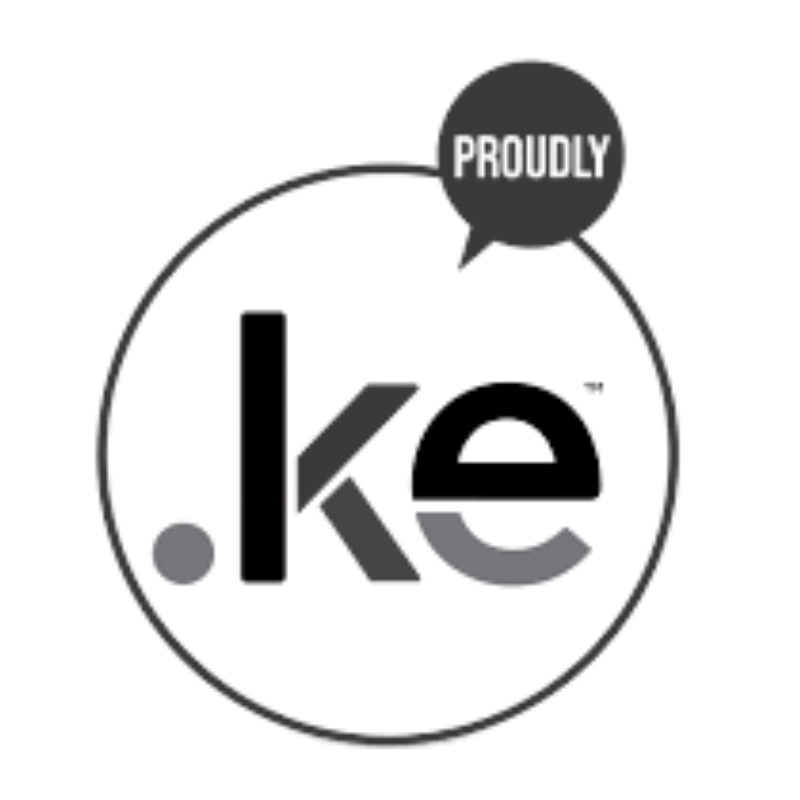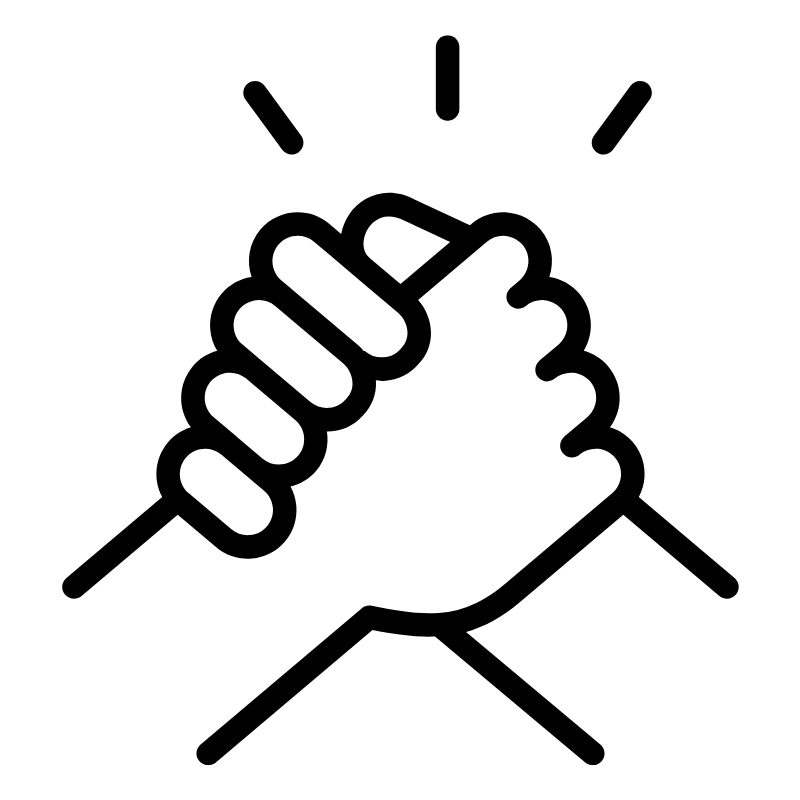What is a Domain Name? (Ultimate Guide)
Have you ever typed a website address into your browser and wondered how it knows where to take you?
Every website you visit uses domain name, like google.com or facebook.com, to make finding sites simple and easy.
A domain name is the unique address that visitors use to reach your website online.
If you plan to build a website, understanding what a domain name is and why it matters is important.
You’ll see how domain names work, their different parts, and how to pick the right one for your own site.
What is a Domain Name?
A domain name is a word or group of words that acts as your website’s address. It is what you type in the browser to visit a website. For example, “truehost.co.ke ” is a domain name.
Think of a domain name like a name of a shop in town — it tells people exactly where to go. Without domain names, you would need to remember long strings of numbers for every website, which is not easy or practical.
Domain names replace the need to remember complex Internet Protocol (IP) addresses. Instead of typing something like “192.168.1.1,” you just use a domain name.
This makes navigation online much simpler for everyone.
Each domain name ends with a domain extension, like .com, .ke, or .org. The part before the extension is unique to the site.
Some domain names help people know what kind of website to expect, such as “.shop” for online stores or “.edu” for schools.
If you want to own a domain, you register it through a domain registrar. This gives you the right to use that web address for your website, business, or personal project.
Good domain names are short, easy to spell, and clearly show what your website is about.
How Domain Names Work
When you enter a domain name in your web browser, your device looks for a matching IP address. This tells your device where to find the web page you want.
The actual process involves a few steps, but you only see the website load.
Domain names work together with URLs (Uniform Resource Locators). A URL is the specific web address for a page, and it includes the domain name.
For example, in https://truehost.co.ke/domains/, truehost.co.ke is the domain and /about is the specific page path.
Here’s how the steps look:
- Type the domain name in your browser’s address bar.
- The browser contacts DNS servers to translate the domain name to an IP address.
- Your device connects to the website’s server using this IP address.
- The server sends the web page back to your browser.
Domain names are the face of your website. They let people find your site instead of having to remember numbers. If you want your business or ideas online, picking and managing your domain name is one of the first steps.
The Role of the Domain Name System
The Domain Name System (DNS) is a big part of how the internet works. DNS turns domain names into IP addresses.
Think of DNS like a phonebook for the internet — it matches website names to the numbers that computers use.
When you enter a domain name, your device sends a request to a DNS server. This server looks up the correct IP address for that domain name. Once it finds the right match, your browser connects to the website’s server.
This whole process:
- Makes using the internet easier.
- Keeps websites running smoothly.
- Lets you use words instead of numbers to visit pages.
DNS servers handle millions of these searches every second. They are a key part of the internet infrastructure, keeping everything connected.
Parts of a Domain
A domain name is made up of several key parts that help identify and organize a website:
- Subdomain: Optional prefix (e.g. www, blog, shop) used to separate sections or apps of a site.
- Second-level domain (SLD): The core, unique name (e.g. google, money, amazon) — this is your brand or site name.
- Top-level domain (TLD): The suffix (e.g. .com, .org, .ke) that indicates the type or location of the site.
Some country domains (like .co.ke or .co.uk) act like a second-level TLD, making the actual SLD your brand name just before it.
Example:
In blog.money.ke
- blog = subdomain
- money = second-level domain
- ke = top-level domain
Together, they form the full domain name. Each part plays a different role in organizing, identifying, and managing your online presence.
For more, read about the basic parts of a domain name.
Domain Registration and Management

Getting your own domain name is the first step to building your online presence. Registering and managing your domain name not only helps people find your website, but also protects your brand and information.
Your choices for domain providers, how you handle renewal, and keeping your data private all affect how your domain works for your needs.
Simple steps can make a big difference in security and ease of use.
When you register a domain, you also get control over your website’s address. Before you start, it’s important to know what to look for in a registrar and know the basics of how to manage everything after buying.
Registering a Domain Name
Registering a domain name means you claim a website name that nobody else can use.
You pick the name, check if it’s available, and buy it from a domain registrar like Truehost or another company.
The Internet Corporation for Assigned Names and Numbers (ICANN) manages the system that lets you register a domain name.
You usually pay the registrar each year. Most registrars offer auto-renewal, so you don’t lose your domain by forgetting to pay. When you finish, you become the domain owner for as long as you renew the registration.
You must provide contact info during registration. This info goes in a public database called the WHOIS registry unless you use privacy services.
If you stop paying or cancel, the name can become available for someone else to buy.
Expired Domains marketplaces do exist specifically to sell expired domains that were not renewed.
Choosing a Domain Registrar
Choosing a good domain registrar makes owning your website easier.
A domain registrar is a company authorized to sell and manage domain names.
Look for these important features:
- Simple search tool for checking name availability
- Transparent pricing with no hidden fees
- Good customer support, especially if you’re in Kenya
- Easy transfer process if you wish to move your domain
- Auto-renewal options
Most registrars also sell extra services such as hosting, SSL certificates, or domain privacy.
Here’s a quick table to help compare key registrar features:
| Domain Registrar | Accredited | Auto-Renewal | Kenyan Support |
| Truehost | Yes | Yes | Yes |
| GoDaddy | Yes | Yes | No |
| Namecheap | Yes | Yes | No |
Managing Domain Names
After you register a domain, you need to manage it.
Domain management includes
- Renewing your domain
- Changing contact info
- Updating name servers, and
- Keeping your settings current.
- Locking or Unlocking domain name
- Retrieving EPP code
Many registrars let you manage everything from a simple dashboard.
With proper management, you avoid losing your domain to expiry or making it easy for someone else to claim it.
Use auto-renewal if you want to make sure your domain name never lapses.
Unused domain names can be sold or kept.
Managing your domains also means watching out for scams and keeping your records updated. Some people collect domain names to sell them later, but you must keep each name registered to avoid losing it.
Domain Privacy and Security
Domain privacy protects your personal details, such as your name, email, and phone number, from being published on the public WHOIS registry.
Most registrars offer domain privacy services for an extra fee.
Without privacy, anyone can look up your info. This makes you a target for spam or scams. Turning on privacy means your registrar’s details show up instead of yours.
At Truehost, you can secure any elligible domain at Just KES 400/year.
Security matters, too.
Some registrars offer two-factor authentication, protection against hijacking, and alerts for changes.
Always use strong, unique passwords for your registrar account. If you lose control of your domain, it can be hard to get back.
Keep these points in mind:
- Use privacy services
- Turn on all available security tools
- Watch for suspicious emails about your domain
- Update your contact info if it changes
If you’re looking to register a domain name in Kenya, you can trust Truehost for quick and secure domain registration services.
Choosing the Right Domain Name
Your domain name is your website’s address. It shapes your brand’s first impression and affects how easy it is for people to find you online.
A strong domain name adds credibility to your business and can help you stand out from your competitors.
As such, picking a domain is not just about what sounds good. The right choice can support your branding, improve SEO, and unlock growth opportunities for your website.
Tips for Selecting a Domain Name
Keep your domain name short and easy to remember. Long or complicated names are hard to spell and easier to forget.
Avoid special characters or numbers, as these often confuse visitors. Stick to letters only and use simple words whenever possible.
Use keywords related to your business. For example, if you have a technology startup, include tech-related phrases.
Choose the right extension:
- .com is the most trusted and popular.
- .co.ke is great for Kenyan businesses.
Check if the domain is available on social media platforms. Consistent branding across accounts makes you easier to find.
For more detailed advice, see tips at Choosing a Domain Name.
Branding and SEO Considerations
Your domain name is a key part of your branding.
It should match your business name or reflect what you do.
A catchy domain name is easier for people to share and remember. If people can spell it after hearing it once, you’re in a good spot.
For SEO, use relevant keywords if you can. Placing simple but related terms in your domain can improve your ranking in searches.
Try to avoid trademarked names, as this may and will cause legal issues down the road.
Search for registered domain names to avoid conflicts.
A unique name can make your brand stand out in a crowded market. Make sure your domain doesn’t look similar to competitors’ names.
Free vs. Paid Domain Names
Free domain names might seem appealing, but they often come with downsides.
You usually get a long, branded subdomain (like yourname.sitebuilder.com), which doesn’t look professional.
A free domain can work for personal use or temporary projects. However, for a business or technology startup, buying a custom domain boosts your credibility and trust.
Paid domains let you:
- Use your own brand name
- Have full ownership and control
- Improve your website’s reputation
With a paid option, you can usually pick from several extensions and make your site more memorable.
That said, keep in mind that you can get a free domain (not a sub domain), when you purchase select hosting plans with annual or longer billing cycle.
Domain Name Generators and Trends
If you’re stuck finding the perfect name, try a domain name generator.
These tools suggest domain ideas based on your keywords or preferences. They can help spark creativity and show you what’s available.
Trendy domain names use unique words, short phrases, or clever combinations. Some successful startups use made-up words for something catchy and easy to brand.
Here are some popular trends:
- Using two easy words, like “QuickTech” or “FoodMarket”
- Short or one-word names (Amazon, Stripe)
- Misspelled versions of common words (Flickr, Tumblr)
Check availability by searching popular domain name generators or registrars. Picking a domain that fits with current trends, but is also simple and relevant, sets your project up for success.
More Domains Guides
Promos
Use Coupon Code:…
7 Types of Web Hosting (Ultimate Guide)
Choosing the right web hosting can be a daunting task, especially…
How to Choose a Domain Name
Staring at your screen, trying to pick the best name for…
Hosting vs Domain: Key Differences Explained
Are you confused about hosting vs domain? You’re not alone. Many…
 Domain SearchInstantly check and register your preferred domain name
Domain SearchInstantly check and register your preferred domain name Web Hosting
Web Hosting cPanel HostingHosting powered by cPanel (Most user friendly)
cPanel HostingHosting powered by cPanel (Most user friendly) KE Domains
KE Domains Reseller HostingStart your own hosting business without tech hustles
Reseller HostingStart your own hosting business without tech hustles Windows HostingOptimized for Windows-based applications and sites.
Windows HostingOptimized for Windows-based applications and sites. Free Domain
Free Domain Affiliate ProgramEarn commissions by referring customers to our platforms
Affiliate ProgramEarn commissions by referring customers to our platforms Free HostingTest our SSD Hosting for free, for life (1GB storage)
Free HostingTest our SSD Hosting for free, for life (1GB storage) Domain TransferMove your domain to us with zero downtime and full control
Domain TransferMove your domain to us with zero downtime and full control All DomainsBrowse and register domain extensions from around the world
All DomainsBrowse and register domain extensions from around the world .Com Domain
.Com Domain WhoisLook up domain ownership, expiry dates, and registrar information
WhoisLook up domain ownership, expiry dates, and registrar information VPS Hosting
VPS Hosting Managed VPSNon techy? Opt for fully managed VPS server
Managed VPSNon techy? Opt for fully managed VPS server Dedicated ServersEnjoy unmatched power and control with your own physical server.
Dedicated ServersEnjoy unmatched power and control with your own physical server. SupportOur support guides cover everything you need to know about our services
SupportOur support guides cover everything you need to know about our services